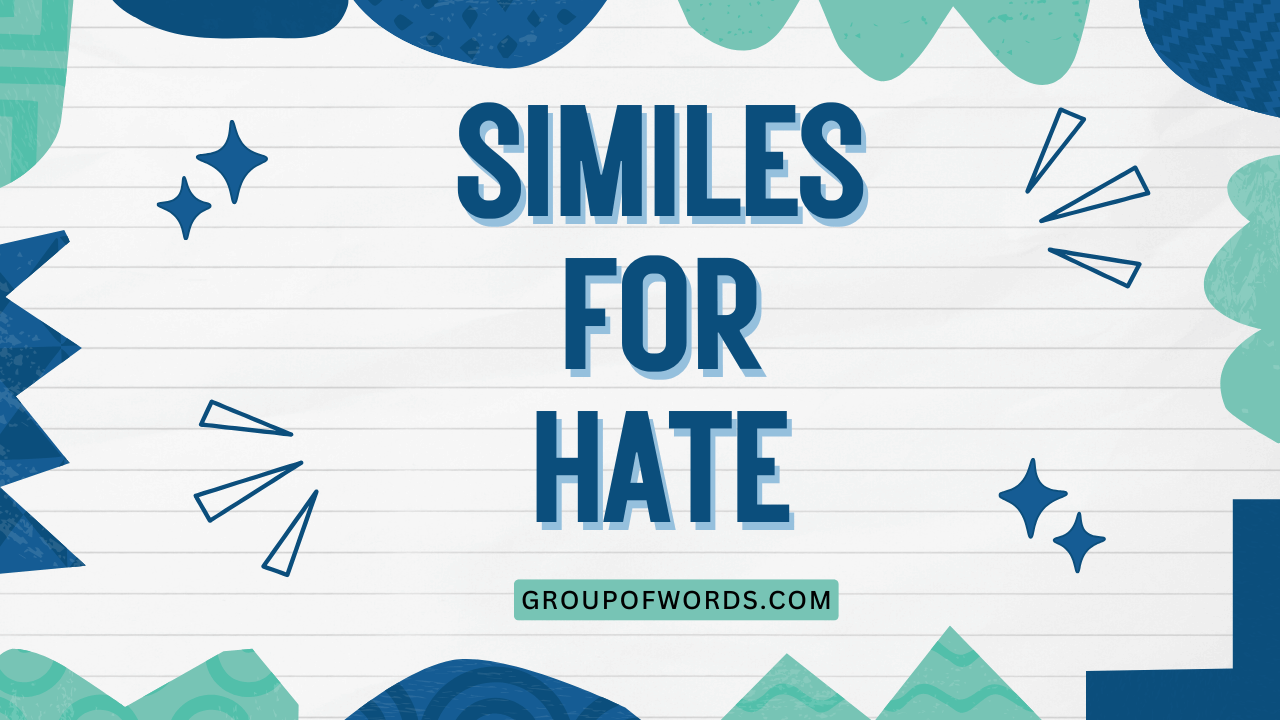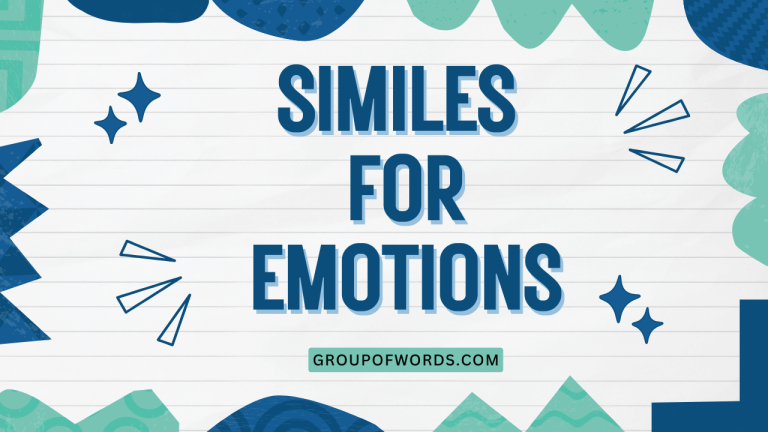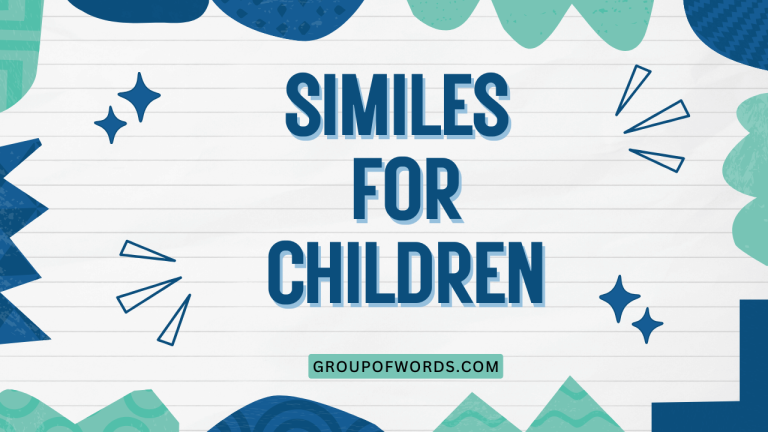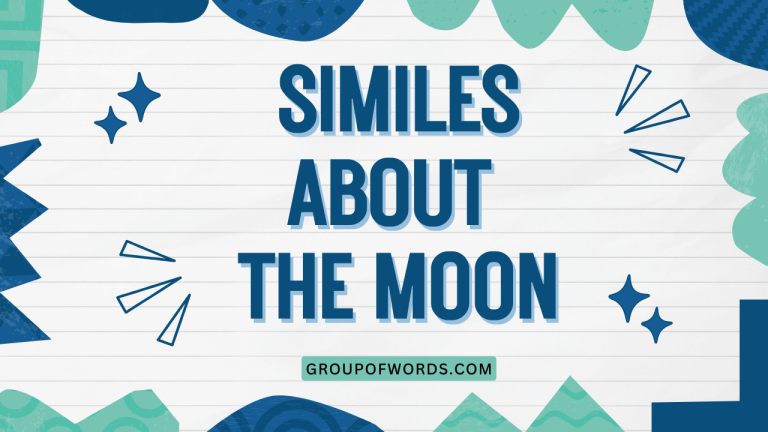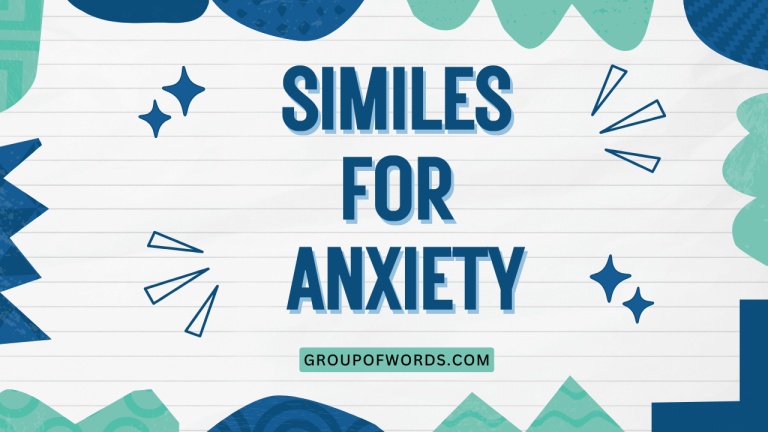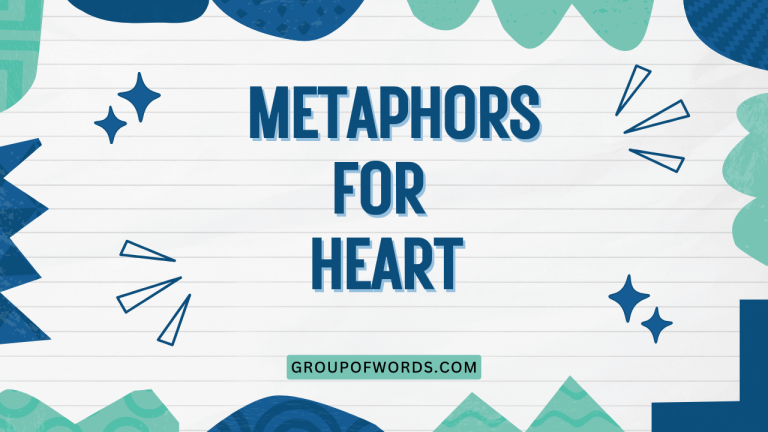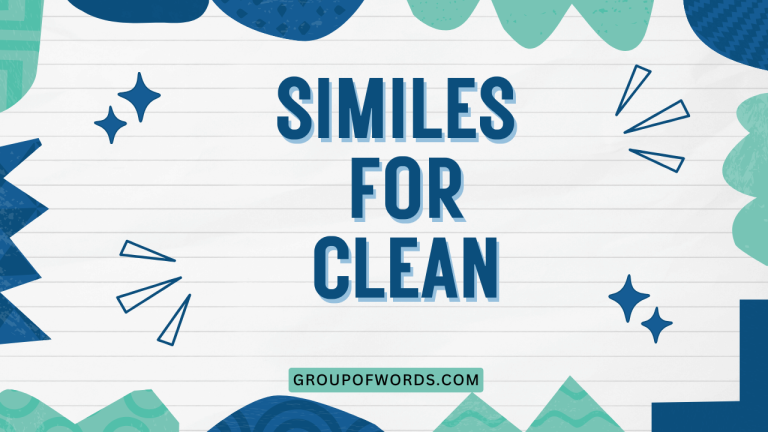Similes for Hate: A Comprehensive Guide to Figurative Language
Understanding how to express strong emotions like hate effectively is crucial for impactful communication. Similes, a type of figurative language, offer a powerful way to convey the intensity and nuances of hate.
This article delves into the world of similes used to describe hate, exploring their structure, types, and usage. Whether you’re a student, writer, or language enthusiast, this comprehensive guide will enhance your understanding and command of English grammar and expression.
Table of Contents
- Introduction
- Definition of Simile
- Structural Breakdown of Similes
- Types of Similes for Hate
- Examples of Similes for Hate
- Usage Rules for Similes
- Common Mistakes with Similes
- Practice Exercises
- Advanced Topics in Similes
- Frequently Asked Questions
- Conclusion
Introduction
Expressing hate is a complex and sensitive issue. Similes provide a nuanced way to articulate this powerful emotion without resorting to direct, potentially offensive language.
By comparing hate to something else, similes allow us to explore its various facets, such as its intensity, destructiveness, and irrationality. This article will guide you through the effective use of similes to describe hate, enhancing your writing and communication skills.
Definition of Simile
A simile is a figure of speech that compares two unlike things using the words “like” or “as.” Its primary function is to create a vivid image or convey a deeper understanding by drawing a parallel between the compared items. Similes are commonly used in literature, poetry, and everyday conversation to make descriptions more engaging and impactful. They add depth to language by evoking emotions and stimulating the imagination.
Classification of Similes
Similes fall under the broader category of figurative language, which also includes metaphors, personification, and hyperbole. They are specifically classified as comparative figures of speech because they explicitly state a comparison using “like” or “as.” This direct comparison distinguishes them from metaphors, which imply a comparison without using these words.
Function of Similes
The function of a simile is to enhance understanding and create a more vivid image in the reader’s mind. By comparing something abstract or unfamiliar to something concrete or familiar, similes make complex ideas more accessible.
They also add emotional weight to descriptions, allowing writers to convey feelings more effectively.
Contexts for Using Similes
Similes are appropriate in a wide range of contexts, from formal writing to casual conversation. In literature, they are used to create imagery and develop themes.
In everyday speech, they can add color and emphasis to descriptions. However, it’s important to use similes judiciously, ensuring that the comparison is relevant and meaningful to the context.
Structural Breakdown of Similes
A simile consists of two main components: the tenor (the subject being described) and the vehicle (the object to which the subject is being compared). These two elements are connected by a word indicating comparison, typically “like” or “as.” Understanding this structure is crucial for constructing effective similes.
Tenor (Subject)
The tenor is the subject of the comparison. It’s the thing you’re trying to describe or explain.
In the context of this article, the tenor will often be some aspect of hate, such as its intensity, destructiveness, or pervasiveness. For example, in the simile “His hate was like a raging fire,” the tenor is “his hate.”
Vehicle (Object of Comparison)
The vehicle is the object or concept to which the tenor is being compared. It’s something familiar or concrete that helps the audience understand the tenor more clearly.
In the example “His hate was like a raging fire,” the vehicle is “a raging fire.” The vehicle should share some characteristic with the tenor that makes the comparison meaningful.
Connectives: “Like” and “As”
The connectives “like” and “as” are the words that explicitly establish the comparison between the tenor and the vehicle. While both words serve the same purpose, “as” is sometimes used in more formal or literary contexts.
The choice between “like” and “as” often depends on the rhythm and flow of the sentence.
Types of Similes for Hate
Similes for hate can be categorized based on the aspect of hate they emphasize. These categories include similes that describe the intensity of hate, its destructiveness, its irrationality, and its pervasiveness.
By understanding these different types, you can choose the most appropriate simile for your specific purpose.
Similes Describing Intensity of Hate
These similes focus on the strength and force of hate. They often compare hate to powerful natural phenomena or intense emotions.
Examples include: “Hate burned like a wildfire” and “His hate was as strong as a hurricane.” These similes convey the overwhelming nature of intense hatred.
Similes Describing Destructiveness of Hate
These similes highlight the damaging and ruinous effects of hate. They often compare hate to destructive forces or corrosive substances.
Examples include: “Hate corroded his soul like acid” and “Her hate was as destructive as a bomb.” These similes emphasize the devastating consequences of hatred.
Similes Describing Irrationality of Hate
These similes emphasize the illogical and unreasonable nature of hate. They often compare hate to madness or irrational behavior.
Examples include: “His hate was like a blind rage” and “Her hate was as senseless as a child’s tantrum.” These similes highlight the lack of reason behind hateful feelings.
Similes Describing Pervasiveness of Hate
These similes focus on the widespread and all-encompassing nature of hate. They often compare hate to a disease or a spreading darkness.
Examples include: “Hate spread like a plague” and “His hate was as pervasive as a thick fog.” These similes emphasize how hate can infect and dominate everything it touches.
Examples of Similes for Hate
The following tables provide a comprehensive list of similes for hate, organized by category. Each table includes a variety of examples to illustrate the different ways similes can be used to describe hate effectively.
Examples Describing Intensity of Hate
The following table presents similes that describe the intensity of hate. These examples showcase how to use comparison to convey the strength and force of hateful emotions.
| Simile | Explanation |
|---|---|
| His hate burned like a furnace. | Compares the intensity of hate to the extreme heat of a furnace. |
| Her hate was as fierce as a lioness protecting her cubs. | Compares the fierceness of hate to the protective instincts of a lioness. |
| Their hate raged like a wildfire consuming everything in its path. | Compares the destructive intensity of hate to a rapidly spreading wildfire. |
| His hate was as potent as a venomous snake’s bite. | Compares the strength of hate to the lethal effect of venom. |
| Her hate surged like a tsunami, overwhelming everything in its wake. | Compares the overwhelming force of hate to a massive tidal wave. |
| His hate smoldered like a dormant volcano, ready to erupt. | Compares the hidden intensity of hate to a volcano about to explode. |
| Her hate was as sharp as a shard of glass, cutting deep. | Compares the piercing intensity of hate to a sharp object. |
| Their hate resonated like a thunderclap, shaking the foundations of their relationship. | Compares the powerful impact of hate to a thunderclap. |
| His hate consumed him like a ravenous beast. | Compares the all-consuming nature of hate to a hungry animal. |
| Her hate was as fiery as the sun, scorching everything it touched. | Compares the intense heat of hate to the sun’s scorching rays. |
| His hate boiled like a cauldron of poison, ready to spill over. | Compares the toxic intensity of hate to a boiling cauldron of poison. |
| Her hate was as bitter as gall, leaving a foul taste in her mouth. | Compares the unpleasant intensity of hate to the bitterness of gall. |
| Their hate seethed like a nest of vipers, ready to strike. | Compares the dangerous intensity of hate to a nest of venomous snakes. |
| His hate was as cold as ice, freezing his heart. | Compares the unfeeling intensity of hate to extreme cold. |
| Her hate throbbed like a painful wound, never fully healing. | Compares the persistent intensity of hate to a throbbing wound. |
| Their hate pulsed like a dark star, radiating negativity. | Compares the radiating intensity of hate to a dark star. |
| His hate was as deafening as a sonic boom, drowning out all reason. | Compares the overwhelming intensity of hate to a sonic boom. |
| Her hate shimmered like heat haze, distorting her perception. | Compares the distorting intensity of hate to heat haze. |
| Their hate clawed like a desperate animal, fighting for dominance. | Compares the aggressive intensity of hate to a desperate animal. |
| His hate surged like a tidal wave, threatening to engulf him. | Compares the overwhelming intensity of hate to a tidal wave. |
| Her hate was as relentless as the desert sun, never giving respite. | Compares the unyielding intensity of hate to the desert sun. |
| Their hate spiraled like a tornado, pulling everything into its vortex. | Compares the destructive intensity of hate to a tornado. |
| His hate was as explosive as dynamite, ready to detonate. | Compares the sudden intensity of hate to dynamite. |
| Her hate echoed like a scream in the night, piercing the silence. | Compares the jarring intensity of hate to a scream. |
| Their hate festered like an untreated infection, spreading rapidly. | Compares the growing intensity of hate to an infection. |
| His hate gnawed like a rat, slowly destroying him from within. | Compares the gradual intensity of hate to a gnawing rat. |
| Her hate was as unyielding as stone, impossible to break. | Compares the steadfast intensity of hate to stone. |
| Their hate reverberated like a drumbeat of war, signaling conflict. | Compares the ominous intensity of hate to a drumbeat of war. |
| His hate was as blinding as a flash of light, obscuring the truth. | Compares the obscuring intensity of hate to a flash of light. |
Examples Describing Destructiveness of Hate
The following table presents similes that describe the destructiveness of hate. These examples illustrate how to use comparisons to emphasize the damaging and ruinous effects of hatred.
| Simile | Explanation |
|---|---|
| His hate corroded his soul like acid. | Compares the destructive power of hate to the corrosive effect of acid. |
| Her hate was as destructive as a wildfire, leaving nothing but ashes. | Compares the devastating impact of hate to a wildfire. |
| Their hate shattered their relationship like a dropped vase. | Compares the breaking of a relationship due to hate to a shattered vase. |
| His hate poisoned his mind like a venomous snake’s bite. | Compares the toxic influence of hate to the effect of venom. |
| Her hate eroded her empathy like water wearing away stone. | Compares the gradual destruction of empathy due to hate to water eroding stone. |
| Their hate tore them apart like a hurricane ripping through a town. | Compares the destructive force of hate to a hurricane. |
| His hate crumbled his resolve like dry earth underfoot. | Compares the weakening effect of hate to dry earth crumbling. |
| Her hate withered her spirit like a plant without water. | Compares the draining effect of hate to a plant without water. |
| Their hate scarred their hearts like a branding iron. | Compares the lasting damage of hate to a branding iron. |
| His hate consumed his happiness like a moth devouring fabric. | Compares the consuming nature of hate to a moth devouring fabric. |
| Her hate ravaged her beauty like a storm battering a flower. | Compares the destructive impact of hate to a storm battering a flower. |
| Their hate demolished their trust like a wrecking ball. | Compares the destruction of trust due to hate to a wrecking ball. |
| His hate decimated his career like a plague wiping out a population. | Compares the devastating impact of hate to a plague. |
| Her hate dismantled her family like a dismantling machine. | Compares the breaking of a family due to hate to dismantling machine. |
| Their hate pulverized their dreams like a hammer smashing glass. | Compares the destruction of dreams due to hate to a hammer smashing glass. |
| His hate obliterated his compassion like a black hole swallowing light. | Compares the obliteration of compassion due to hate to a black hole. |
| Her hate annihilated her reputation like a nuclear explosion. | Compares the annihilation of reputation due to hate to a nuclear explosion. |
| Their hate eviscerated their friendship like a surgeon’s knife. | Compares the destructive impact of hate to a surgeon’s knife. |
| His hate imploded his sanity like a building collapsing from within. | Compares the destruction of sanity due to hate to a building collapsing. |
| Her hate was as ruinous as a flood sweeping away homes. | Compares the devastating impact of hate to a flood. |
| Their hate shattered their peace like a gunshot in the night. | Compares the destructive impact of hate to a gunshot. |
| His hate was as devastating as a drought turning fertile land to desert. | Compares the devastating impact of hate to a drought. |
| Her hate dissolved her confidence like sugar in water. | Compares the dissolution of confidence due to hate to sugar dissolving. |
| Their hate fragmented their community like an earthquake. | Compares the fragmentation of a community due to hate to an earthquake. |
| His hate was as corrosive as rust eating away at metal. | Compares the corrosive impact of hate to rust. |
| Her hate was as destructive as termites eating away at wood. | Compares the destructive impact of hate to termites. |
| Their hate was as obliterating as a supernova explosion. | Compares the obliterating impact of hate to a supernova explosion. |
| His hate was as poisonous as radiation contaminating the environment. | Compares the poisonous impact of hate to radiation. |
| Her hate was as corrosive as battery acid burning through metal. | Compares the corrosive impact of hate to battery acid. |
Examples Describing Irrationality of Hate
The following table presents similes that describe the irrationality of hate. These examples show how to use comparisons to highlight the illogical and unreasonable nature of hateful feelings.
| Simile | Explanation |
|---|---|
| His hate was like a blind rage, uncontrolled and senseless. | Compares the irrationality of hate to a blind rage. |
| Her hate was as senseless as a child’s tantrum, lacking any logical basis. | Compares the senselessness of hate to a child’s tantrum. |
| Their hate was as irrational as fearing the unknown, based on unfounded assumptions. | Compares the irrationality of hate to fearing the unknown. |
| His hate was like a fever dream, distorted and disconnected from reality. | Compares the distorted nature of hate to a fever dream. |
| Her hate was as illogical as believing in superstitions, devoid of reason. | Compares the illogical nature of hate to believing in superstitions. |
| Their hate was as nonsensical as arguing with a brick wall, accomplishing nothing. | Compares the nonsensical nature of hate to arguing with a brick wall. |
| His hate was like chasing shadows, driven by illusion. | Compares the illusory nature of hate to chasing shadows. |
| Her hate was as absurd as trying to empty the ocean with a spoon, futile and pointless. | Compares the absurdity of hate to trying to empty the ocean with a spoon. |
| Their hate was as unreasonable as blaming the weather for their problems, misdirected and unfair. | Compares the unreasonableness of hate to blaming the weather. |
| His hate was like tilting at windmills, fighting imaginary enemies. | Compares the imaginary nature of hate to tilting at windmills. |
| Her hate was as ludicrous as wearing a winter coat in the summer, out of place and inappropriate. | Compares the ludicrous nature of hate to wearing a winter coat in summer. |
| Their hate was as preposterous as believing the earth is flat, contrary to all evidence. | Compares the preposterous nature of hate to believing the earth is flat. |
| His hate was like barking at the moon, a pointless and futile exercise. | Compares the futility of hate to barking at the moon. |
| Her hate was as farcical as a clown in a courtroom, entirely out of context. | Compares the farcical nature of hate to a clown in a courtroom. |
| Their hate was as whimsical as a cat chasing its tail, endless and unproductive. | Compares the unproductive nature of hate to a cat chasing its tail. |
| His hate was like searching for a needle in a haystack, a hopeless endeavor. | Compares the hopelessness of hate to searching for a needle in a haystack. |
| Her hate was as eccentric as wearing mismatched shoes, unconventional and odd. | Compares the eccentricity of hate to wearing mismatched shoes. |
| Their hate was like a dog chasing its tail, going around in circles. | Compares the repetitive and pointless nature of hate to a dog chasing its tail. |
| His hate was as whimsical as believing in unicorns, fantastical and unreal. | Compares the fantastical nature of hate to believing in unicorns. |
| Her hate was as outlandish as a fish riding a bicycle, bizarre and unexpected. | Compares the bizarre nature of hate to a fish riding a bicycle. |
| Their hate was as peculiar as a square wheel on a car, dysfunctional and ineffective. | Compares the ineffective nature of hate to a square wheel on a car. |
| His hate was as quirky as a penguin in the desert, out of place and uncomfortable. | Compares the out-of-place nature of hate to a penguin in the desert. |
| Her hate was as bizarre as a cat meowing in Morse code, incomprehensible. | Compares the incomprehensible nature of hate to a cat meowing in Morse code. |
| Their hate was as ludicrous as a snail racing a cheetah, completely mismatched. | Compares the mismatched nature of hate to a snail racing a cheetah. |
| His hate was as preposterous as trying to build a house on quicksand, doomed to fail. | Compares the doomed nature of hate to building a house on quicksand. |
Examples Describing Pervasiveness of Hate
The following table presents similes that describe the pervasiveness of hate. These examples illustrate how comparisons emphasize the widespread and all-encompassing nature of hateful feelings.
| Simile | Explanation |
|---|---|
| Hate spread like a plague, infecting everything it touched. | Compares the widespread nature of hate to a plague. |
| His hate was as pervasive as a thick fog, obscuring all clarity. | Compares the all-encompassing nature of hate to a thick fog. |
| Their hate permeated the atmosphere like a toxic gas, poisoning the environment. | Compares the poisoning nature of hate to a toxic gas. |
| His hate seeped into his thoughts like ink staining paper, impossible to remove. | Compares the indelible nature of hate to ink staining paper. |
| Her hate engulfed her world like a rising tide, drowning out all joy. | Compares the engulfing nature of hate to a rising tide. |
| Their hate saturated their lives like waterlogged earth, heavy and oppressive. | Compares the oppressive nature of hate to waterlogged earth. |
| His hate infested his mind like a parasite, feeding on his well-being. | Compares the parasitic nature of hate to a parasite. |
| Her hate permeated her being like a bad smell, lingering everywhere she went. | Compares the lingering nature of hate to a bad smell. |
| Their hate infiltrated their society like a virus, weakening its foundations. | Compares the weakening nature of hate to a virus. |
| His hate suffused his actions like dye coloring fabric, coloring everything he did. | Compares the coloring nature of hate to dye coloring fabric. |
| Her hate was as inescapable as the air they breathed, always present. | Compares the inescapable nature of hate to air. |
| Their hate was as ubiquitous as shadows, present wherever there was light. | Compares the ubiquitous nature of hate to shadows. |
| His hate was as all-encompassing as the ocean, surrounding him completely. | Compares the all-encompassing nature of hate to the ocean. |
| Her hate was as pervasive as the internet, connecting every aspect of her life. | Compares the connecting nature of hate to the internet. |
| Their hate was as inescapable as gravity, pulling them down. | Compares the inescapable nature of hate to gravity. |
| His hate was as ubiquitous as advertising, impossible to avoid. | Compares the unavoidable nature of hate to advertising. |
| Her hate was as all-consuming as fire, destroying everything in its path. | Compares the destructive nature of hate to fire. |
| Their hate was as pervasive as social media, influencing every conversation. | Compares the influencing nature of hate to social media. |
| His hate was as inescapable as taxes, a constant burden. | Compares the burdensome nature of hate to taxes. |
| Her hate was as ubiquitous as air pollution, affecting everyone around her. | Compares the affecting nature of hate to air pollution. |
| Their hate was as encompassing as a spiderweb, ensnaring everything. | Compares the ensnaring nature of hate to a spiderweb. |
| His hate spread like mold in a damp basement, unseen but destructive. | Compares the unseen spread of hate to mold. |
| Her hate lingered like a bad dream, haunting her waking hours. | Compares the haunting nature of hate to a bad dream. |
| Their hate enveloped them like a shroud, suffocating their joy. | Compares the suffocating nature of hate to a shroud. |
| His hate haunted him like a ghost, never letting him find peace. | Compares the haunting nature of hate to a ghost. |
| Her hate clung to her like a shadow, always following her. | Compares the following nature of hate to a shadow. |
| Their hate consumed them like a dark secret, hidden but always present. | Compares the hidden nature of hate to a dark secret. |
| His hate settled over him like a heavy blanket, weighing him down. | Compares the weighing nature of hate to a heavy blanket. |
Usage Rules for Similes
Using similes effectively requires adherence to certain rules. The comparison should be clear and relevant, and the simile should enhance rather than distract from the overall message.
Avoid clichéd similes and ensure that the comparison is appropriate for the context.
Clarity and Relevance
The most important rule is that the comparison should be clear and relevant. The audience should be able to easily understand the connection between the tenor and the vehicle.
If the comparison is too obscure or far-fetched, it will confuse rather than enlighten the reader.
Avoiding Clichéd Similes
Clichéd similes are overused and have lost their impact. Examples include “as blind as a bat” and “as strong as an ox.” Using fresh and original similes will make your writing more engaging and memorable.
Appropriateness for Context
The simile should be appropriate for the context in which it’s used. A simile that is too informal or humorous may be inappropriate for a serious or formal setting.
Consider the tone and audience when choosing a simile.
Common Mistakes with Similes
Several common mistakes can undermine the effectiveness of similes. These include using mixed metaphors, creating illogical comparisons, and using similes that are too complex or convoluted.
Being aware of these pitfalls can help you avoid them.
Using Mixed Metaphors
A mixed metaphor combines two or more incompatible metaphors, creating a confusing and nonsensical image. Similarly, a mixed simile combines incompatible comparisons.
For example: “His hate was like a raging fire that nipped at his heels.” This combines the image of a raging fire with the image of something nipping at heels, creating a confusing picture.
Creating Illogical Comparisons
An illogical comparison occurs when there is no meaningful connection between the tenor and the vehicle. For example: “His hate was like a refrigerator.” There is no clear or relevant connection between hate and a refrigerator, making the simile ineffective.
Using Overly Complex Similes
Similes should be clear and concise. Overly complex or convoluted similes can be difficult to understand and distract from the main point.
For example: “His hate was like a labyrinthine maze constructed of twisted emotions and shadowed memories, leading to a dead end of despair.” This simile is too complex and difficult to process.
| Incorrect | Correct | Explanation |
|---|---|---|
| His hate was like a sweet lemon. | His hate was as bitter as lemon rind. | The comparison should be logical; hate is generally not sweet. |
| Her hate was a raging inferno that whispered secrets. | Her hate was like a raging inferno. | Avoid mixing metaphors and similes. |
| His hate was like a chair. | His hate was like a heavy burden. | The comparison must be relevant and meaningful. |
Practice Exercises
The following exercises will help you practice using similes to describe hate. Each exercise includes a series of questions designed to test your understanding of the concepts covered in this article.
Exercise 1: Identifying Similes
Identify the similes in the following sentences.
| Question | Answer |
|---|---|
| 1. His hate was like a dark cloud hanging over him. | like a dark cloud hanging over him |
| 2. Her hate corroded her soul. | (No simile) |
| 3. Their hate spread like wildfire. | spread like wildfire |
| 4. His hate was a venomous snake. | (No simile) |
| 5. Her hate was as cold as ice. | as cold as ice |
| 6. His hate consumed him entirely. | (No simile) |
| 7. Their hate was like a festering wound. | was like a festering wound |
| 8. His hate poisoned their relationship. | (No simile) |
| 9. Her hate was as bitter as gall. | as bitter as gall |
| 10. Their hate was a destructive force. | (No simile) |
Exercise 2: Completing Similes
Complete the following similes with an appropriate vehicle.
| Question | Answer |
|---|---|
| 1. His hate was as strong as ______. | a hurricane |
| 2. Her hate burned like ______. | a furnace |
| 3. Their hate spread like ______. | a plague |
| 4. His hate corroded his soul like ______. | acid |
| 5. Her hate was as destructive as ______. | a bomb |
| 6. His hate was like ______, consuming him. | a ravenous beast |
| 7. Their hate was like ______, tearing them apart. | a hurricane |
| 8. His hate was as irrational as ______. | a child’s tantrum |
| 9. Her hate was like ______, obscuring all clarity. | a thick fog |
| 10. Their hate was as pervasive as ______. | shadows |
Exercise 3: Writing Similes
Write your own similes to describe hate, focusing on its intensity, destructiveness, irrationality, and pervasiveness.
| Category | Question | Example Answer |
|---|---|---|
| Intensity | 1. Write a simile describing the intensity of hate. | His hate burned like a raging inferno. |
| Destructiveness | 2. Write a simile describing the destructiveness of hate. | Her hate shattered their relationship like a dropped vase. |
| Irrationality | 3. Write a simile describing the irrationality of hate. | Their hate was as senseless as arguing with a brick wall. |
| Pervasiveness | 4. Write a simile describing the pervasiveness of hate. | His hate spread like a plague, infecting everything it touched. |
| Intensity | 5. Write another simile describing the intensity of hate. | Her hate was as fierce as a lioness defending her cubs. |
| Destructiveness | 6. Write another simile describing the destructiveness of hate. | |
| Destructiveness | 6. Write another simile describing the destructiveness of hate. | Their hate corroded their trust like acid eating through metal. |
Advanced Topics in Similes
Beyond the basic usage of similes, there are advanced techniques that can further enhance your writing. These include using extended similes, combining similes with other figures of speech, and employing similes to create complex imagery.
Using Extended Similes
An extended simile is a simile that is developed over several lines or even an entire paragraph. It allows you to explore the comparison in greater depth, creating a more vivid and detailed image.
Extended similes can be particularly effective for conveying complex emotions or ideas.
Example:
His hate was like a creeping vine, slowly but surely engulfing the garden of his mind. It wrapped itself around his thoughts, choking the life out of reason and compassion.
Its tendrils reached into every corner of his consciousness, poisoning his perceptions and twisting his understanding of the world. Before long, the entire landscape of his mind was overrun with this toxic vine, leaving no room for anything else to grow.
Combining Similes with Other Figures of Speech
Similes can be combined with other figures of speech, such as metaphors, personification, and hyperbole, to create even more powerful and evocative language. This technique allows you to layer different types of imagery, adding depth and complexity to your writing.
Example:
Her hate was like a storm raging within her soul, personifying the turmoil that threatened to consume her. It was a tempest of bitterness and resentment, a hyperbole of emotion that exaggerated her pain beyond all measure.
Creating Complex Imagery
Similes can be used to create complex and multi-layered imagery, allowing you to convey multiple ideas or emotions simultaneously. This technique involves combining several different similes into a single, cohesive description.
Example:
Their hate was like a tapestry woven from threads of jealousy, resentment, and fear. Each thread represented a different aspect of their animosity, and together they formed a complex and intricate pattern of bitterness.
The tapestry hung heavy in the air between them, a constant reminder of their fractured relationship.
Frequently Asked Questions
This section addresses some frequently asked questions about using similes to describe hate.
What is the difference between a simile and a metaphor?
A simile is a direct comparison using “like” or “as,” while a metaphor is an implied comparison that does not use these words. For example, “His hate was like a raging fire” is a simile, while “His hate was a raging fire” is a metaphor.
How can I avoid using clichéd similes?
To avoid clichéd similes, try to think of fresh and original comparisons that are specific to the context. Instead of saying “as strong as an ox,” consider saying “as strong as a hydraulic press.”
Is it okay to use similes in formal writing?
Yes, similes can be used in formal writing, but they should be used judiciously and should be appropriate for the tone and audience. Avoid using overly informal or humorous similes in formal settings.
How do I choose the right vehicle for a simile?
Choose a vehicle that is familiar to your audience and that shares some characteristic with the tenor that you want to emphasize. The comparison should be clear and relevant to the context.
Can I use more than one simile in a sentence?
Yes, you can use more than one simile in a sentence, but be careful not to overload the sentence with too much imagery. The similes should work together to create a cohesive and impactful description.
Conclusion
Similes are a powerful tool for expressing the complexities of hate. By understanding their structure, types, and usage rules, you can effectively convey the intensity, destructiveness, irrationality, and pervasiveness of hate in your writing.
Practice using similes in different contexts, and experiment with advanced techniques to further enhance your skills. With careful attention to detail and a creative approach, you can master the art of using similes to describe hate, adding depth and impact to your communication.
